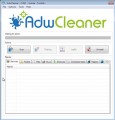The Call Microsoft Technical Department is a misleading ad web-page that forces you to call a fake Microsoft Tech Support. If the Chrome, Firefox, Internet Explorer and Microsoft Edge shows this web site then it is possible that your PC is infected with an ‘ad-supported’ software (also known as adware). The adware is an unwanted software that is going to open you a large number of popup ads and deals. Of course, it’s not a malware or virus in the “general meaning” of this word. It’ll not delete or damage your files, but it can modify some computer’s settings or download and install other harmful applications. So, you’d better to remove ad supported software using the step by step tutorial below and thereby get rid of Call Microsoft Technical Department pop-up scam.
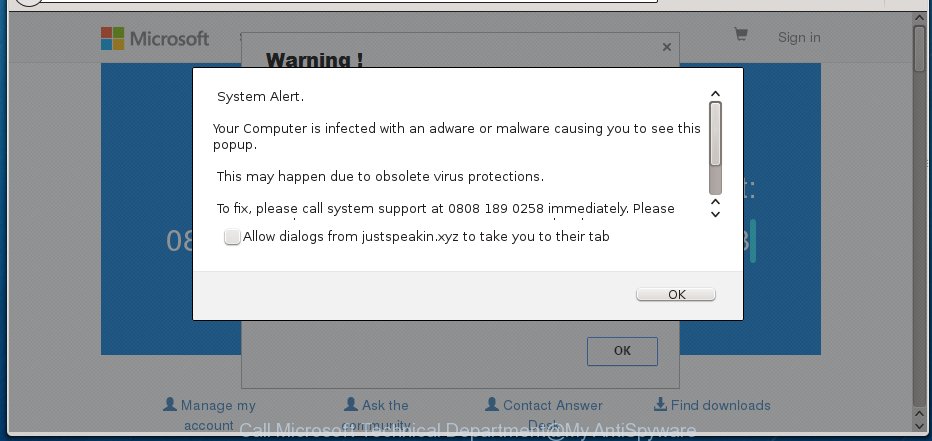
Most often, the ad-supported software affects the most common browsers like the Chrome, FF, Microsoft Internet Explorer and Microsoft Edge. But such the malicious software as well may infect another web browsers by changing its shortcuts (adding an argument such as ‘http://site.address’ into Target field of a web-browser’s shortcut). So every time you run the web browser, it’ll reroute to the unwanted Call Microsoft Technical Department web page. Even if you setup a new homepage, an unwanted page will be the first thing you see when you open the Google Chrome, Mozilla Firefox, Microsoft Internet Explorer and Edge.
The guide below explaining steps to remove Call Microsoft Technical Department pop-up error problem. Feel free to use it for removal of the ‘ad supported’ software that may attack Google Chrome, Microsoft Internet Explorer, Firefox and Microsoft Edge and other popular internet browsers. The step by step tutorial will help you remove adware and thereby clean your web browser from all undesired advertisements.
Remove Call Microsoft Technical Department scam
In many cases ad supported software requires more than a simple uninstall with the help of Windows Control panel in order to be fully removed. For that reason, our team created several removal ways that we’ve summarized in a detailed guidance. Therefore, if you have the intrusive Call Microsoft Technical Department pop-up on your computer and are currently trying to have it removed then feel free to follow the guidance below in order to resolve your problem. Read this manual carefully, bookmark or print it, because you may need to close your internet browser or restart your PC.
How to manually remove Call Microsoft Technical Department
Read this “How to remove” section to know how to manually delete adware that developed to display misleading Call Microsoft Technical Department pop-up within your web-browser. Even if the step-by-step guidance does not work for you, there are several free malware removers below that can easily handle such ad supported software which cause misleading Call Microsoft Technical Department pop-up to appear.
Delete adware through the Windows Control Panel
Some PUPs, browser hijacking applications and ad supported software can be removed by uninstalling the free programs they came with. If this way does not succeed, then looking them up in the list of installed software in Microsoft Windows Control Panel. Use the “Uninstall” command in order to delete them.
Windows 8, 8.1, 10
First, click the Windows button
Windows XP, Vista, 7
First, press “Start” and select “Control Panel”.
It will show the Windows Control Panel as on the image below.
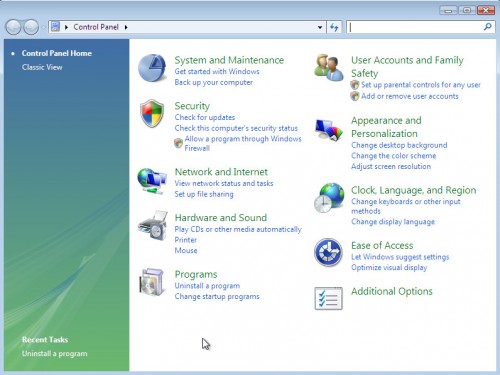
Next, press “Uninstall a program” ![]()
It will show a list of all programs installed on your computer. Scroll through the all list, and uninstall any suspicious and unknown programs. To quickly find the latest installed programs, we recommend sort software by date in the Control panel.
Delete Call Microsoft Technical Department pop-up error from FF
The Firefox reset will keep your personal information like bookmarks, passwords, web form auto-fill data, restore preferences and security settings, remove redirects to undesired Call Microsoft Technical Department web-site and ‘ad supported’ software.
First, open the Firefox. Next, click the button in the form of three horizontal stripes (![]() ). It will open the drop-down menu. Next, press the Help button (
). It will open the drop-down menu. Next, press the Help button (![]() ).
).

In the Help menu press the “Troubleshooting Information”. In the upper-right corner of the “Troubleshooting Information” page click on “Refresh Firefox” button as shown in the figure below.

Confirm your action, click the “Refresh Firefox”.
Get rid of Call Microsoft Technical Department popup scam from IE
By resetting Internet Explorer internet browser you restore your web browser settings to its default state. This is basic when troubleshooting problems that might have been caused by adware that made to show misleading Call Microsoft Technical Department pop-up scam within your internet browser.
First, open the Internet Explorer, click ![]() ) button. Next, press “Internet Options” like below.
) button. Next, press “Internet Options” like below.

In the “Internet Options” screen select the Advanced tab. Next, click Reset button. The Internet Explorer will show the Reset Internet Explorer settings prompt. Select the “Delete personal settings” check box and click Reset button.

You will now need to restart your personal computer for the changes to take effect. It will remove adware which displays misleading Call Microsoft Technical Department pop-up on your computer, disable malicious and ad-supported web-browser’s extensions and restore the IE’s settings such as home page, new tab page and search engine by default to default state.
Remove Call Microsoft Technical Department popup from Chrome
Use the Reset web browser utility of the Chrome to reset all its settings such as home page, new tab page and default search provider to original defaults. This is a very useful tool to use, in the case of web browser redirects to annoying misleading ad web-pages like Call Microsoft Technical Department.

- First start the Chrome and click Menu button (small button in the form of three horizontal stripes).
- It will show the Google Chrome main menu. Select “Settings” option.
- You will see the Google Chrome’s settings page. Scroll down and press “Show advanced settings” link.
- Scroll down again and click the “Reset settings” button.
- The Google Chrome will open the reset profile settings page as on the image above.
- Next press the “Reset” button.
- Once this procedure is done, your internet browser’s start page, newtab page and default search engine will be restored to their original defaults.
- To learn more, read the article How to reset Google Chrome settings to default.
Delete unwanted Scheduled Tasks
If the annoying Call Microsoft Technical Department page opens automatically on Windows startup or at equal time intervals, then you need to check the Task Scheduler Library and delete all the tasks which have been created by unwanted programs.
Press Windows and R keys on the keyboard at the same time. This opens a dialog box that titled as Run. In the text field, type “taskschd.msc” (without the quotes) and click OK. Task Scheduler window opens. In the left-hand side, press “Task Scheduler Library”, like below.
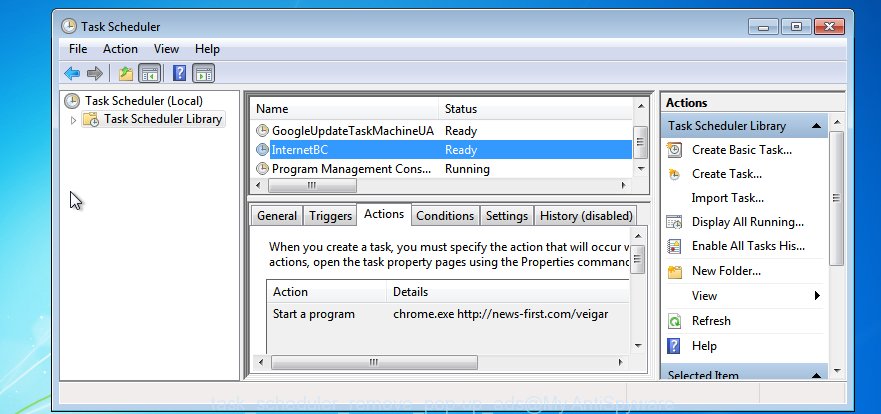
Task scheduler
In the middle part you will see a list of installed tasks. Please choose the first task, its properties will be display just below automatically. Next, click the Actions tab. Pay attention to that it launches on your personal computer. Found something like “explorer.exe http://site.address” or “chrome.exe http://site.address”, then delete this harmful task. If you are not sure that executes the task, check it through a search engine. If it’s a component of the adware, then this task also should be removed.
Having defined the task that you want to remove, then click on it with the right mouse button and choose Delete like below.

Delete a task
Repeat this step, if you have found a few tasks which have been created by ‘ad-supported’ programs. Once is complete, close the Task Scheduler window.
Disinfect the web-browser’s shortcuts to remove Call Microsoft Technical Department redirect
Unfortunately, the adware can also hijack Windows shortcuts (mostly, your web-browsers shortcuts), so that the Call Microsoft Technical Department ad web-page will be shown when you open the Google Chrome, IE, FF and Microsoft Edge or another web browser.
Right click on the shortcut of infected internet browser as shown on the image below.
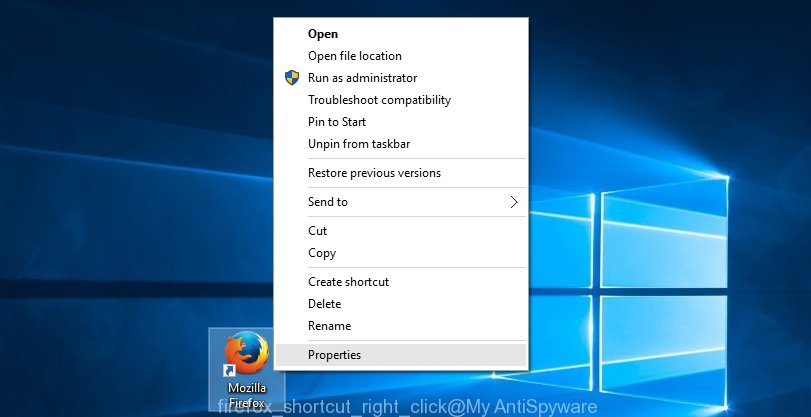
Select the “Properties” option and it’ll display a shortcut’s properties. Next, click the “Shortcut” tab and then delete the “http://site.address” string from Target field as displayed in the figure below.
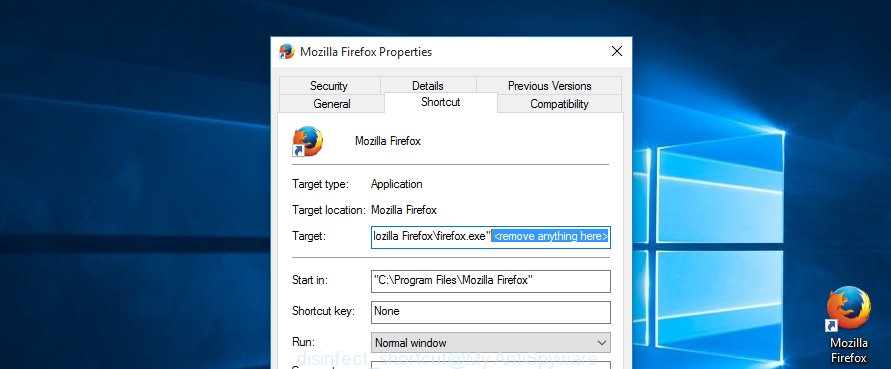
Then click OK to save changes. Repeat the step for all internet browsers that are redirected to the Call Microsoft Technical Department intrusive web-site.
How to remove Call Microsoft Technical Department pop up scam with free programs
Manual removal instructions does not always allow to completely get rid of the adware, as it is not easy to identify and remove components of ad supported software and all malicious files from hard disk. Therefore, it is recommended that you run malicious software removal utility to completely delete Call Microsoft Technical Department off your web-browser. Several free malware removal tools are currently available that can be used against the adware. The optimum way would be to use Zemana Anti-malware, Malwarebytes Free and AdwCleaner.
Run Zemana Anti-malware to remove Call Microsoft Technical Department pop up error
We recommend using the Zemana Anti-malware. You can download and install Zemana Anti-malware to scan for ad supported software and thereby remove Call Microsoft Technical Department pop up from the Google Chrome, Firefox, Microsoft Edge and Microsoft Internet Explorer internet browsers. When installed and updated, the malware remover will automatically scan and detect all threats exist on your system.
Now you can setup and run Zemana Free to remove Call Microsoft Technical Department popup scam from your web-browser by following the steps below:
Click the following link to download Zemana Anti-Malware (ZAM) installation package named Zemana.AntiMalware.Setup on your personal computer.
165041 downloads
Author: Zemana Ltd
Category: Security tools
Update: July 16, 2019
Launch the installer after it has been downloaded successfully and then follow the prompts to setup this tool on your computer.
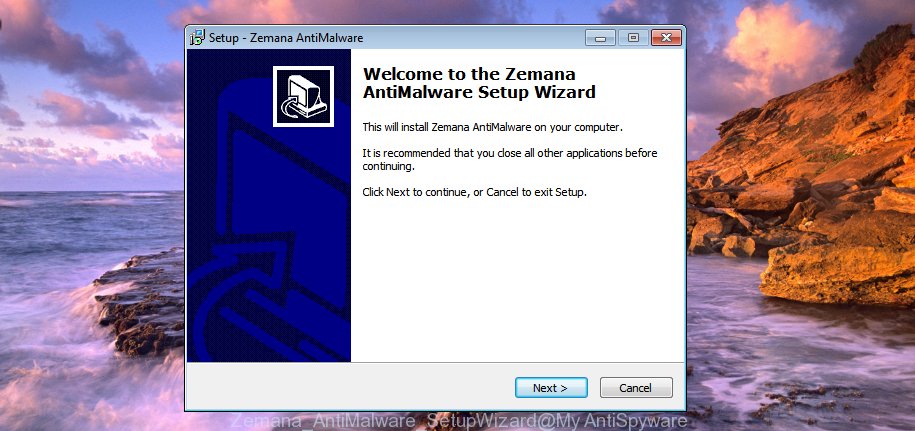
During installation you can change some settings, but we recommend you do not make any changes to default settings.
When install is complete, this malicious software removal tool will automatically run and update itself. You will see its main window as displayed on the image below.
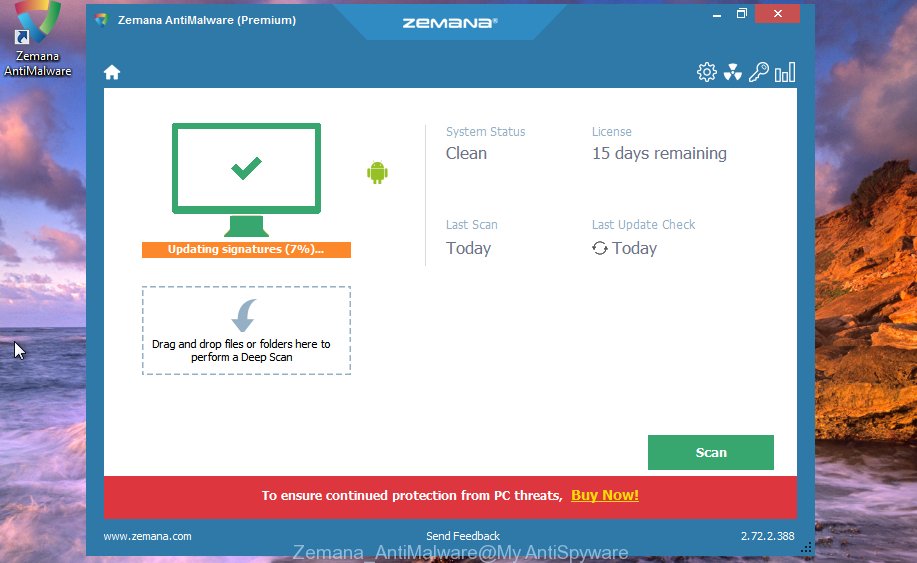
Now press the “Scan” button to start checking your computer for the ad supported software which cause misleading Call Microsoft Technical Department pop-up error to appear.

Once the scan is done, the results are displayed in the scan report. You may move threats to Quarantine (all selected by default) by simply press “Next” button.
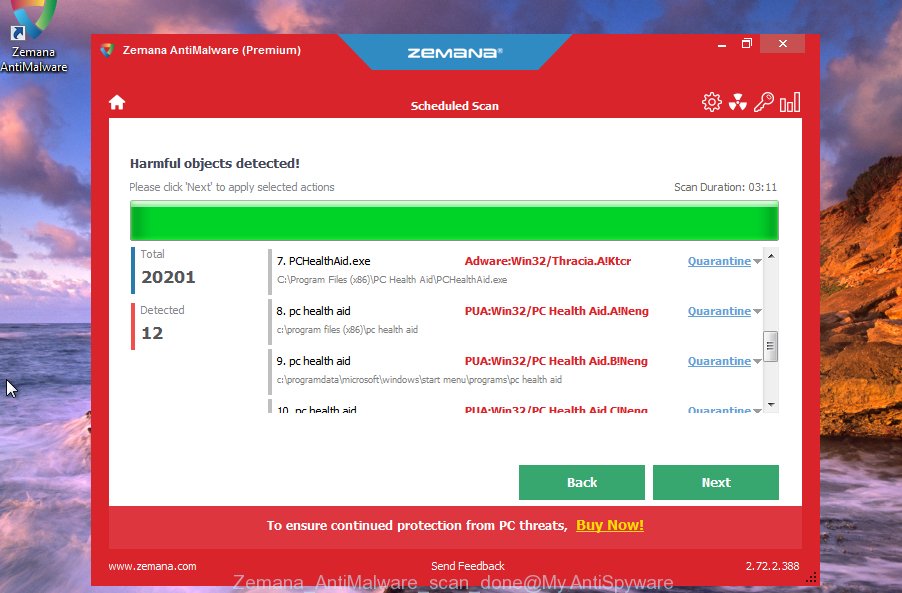
The Zemana AntiMalware (ZAM) will remove ad supported software that developed to show misleading Call Microsoft Technical Department popup error within your internet browser. Once the procedure is finished, you may be prompted to reboot your personal computer to make the change take effect.
How to automatically delete Call Microsoft Technical Department with Malwarebytes
Get rid of Call Microsoft Technical Department popup error manually is difficult and often the ‘ad supported’ software is not completely removed. Therefore, we advise you to use the Malwarebytes Free that are completely clean your PC. Moreover, the free program will help you to remove malicious software, potentially unwanted programs, toolbars and browser hijacker infections that your PC can be infected too.

Download MalwareBytes by clicking on the link below. Save it on your Desktop.
327268 downloads
Author: Malwarebytes
Category: Security tools
Update: April 15, 2020
Once downloading is done, run it and follow the prompts. Once installed, the MalwareBytes will try to update itself and when this task is done, click the “Scan Now” button . MalwareBytes utility will start scanning the whole system to find out ad supported software that causes multiple misleading Call Microsoft Technical Department alerts and pop-ups. A scan can take anywhere from 10 to 30 minutes, depending on the count of files on your computer and the speed of your PC. When a threat is detected, the number of the security threats will change accordingly. Next, you need to click “Quarantine Selected” button.
The MalwareBytes is a free application that you can use to delete all detected folders, files, services, registry entries and so on. To learn more about this malicious software removal utility, we suggest you to read and follow the step by step instructions or the video guide below.
Get rid of Call Microsoft Technical Department pop up and harmful extensions with AdwCleaner
AdwCleaner is a free removal utility which can scan your system for a wide range of security threats like malicious software, ad supported softwares, PUPs as well as ‘ad supported’ software which made to show misleading Call Microsoft Technical Department pop up error within your web browser. It will perform a deep scan of your machine including hard drives and Windows registry. When a malware is found, it will help you to remove all found threats from your computer with a simple click.
Download AdwCleaner utility by clicking on the following link. Save it on your Microsoft Windows desktop or in any other place.
225631 downloads
Version: 8.4.1
Author: Xplode, MalwareBytes
Category: Security tools
Update: October 5, 2024
When downloading is done, open the file location and double-click the AdwCleaner icon. It will start the AdwCleaner utility and you will see a screen as displayed on the image below. If the User Account Control prompt will ask you want to run the program, click Yes button to continue.
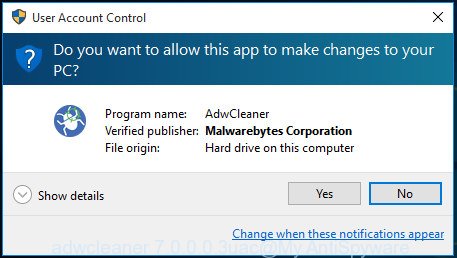
Next, click “Scan” for scanning your personal computer for the adware which cause misleading Call Microsoft Technical Department pop up error to appear. Depending on your computer, the scan can take anywhere from a few minutes to close to an hour. While the AdwCleaner application is checking, you may see how many objects it has identified as threat.
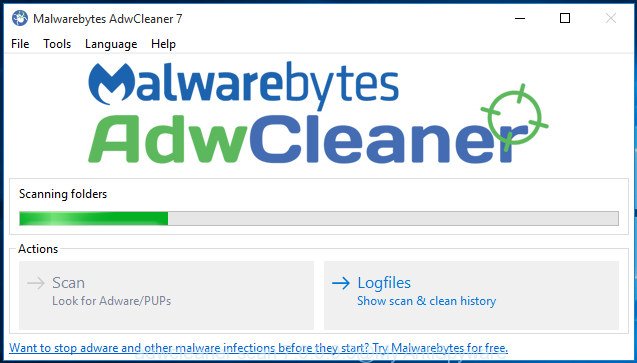
Once finished, AdwCleaner will display a list of all threats detected by the scan as displayed in the following example.
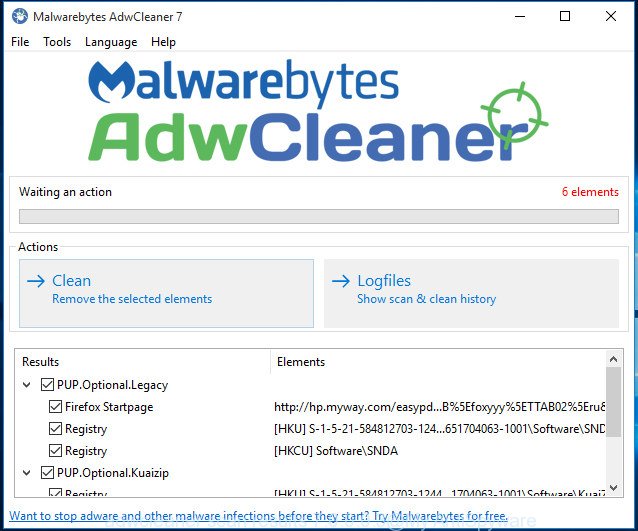
Next, you need to press “Clean” button. It will display a prompt. Click “OK” button. The AdwCleaner will delete ‘ad supported’ software that shows misleading Call Microsoft Technical Department pop-up error on your PC. After the clean-up is done, the utility may ask you to reboot your computer. After reboot, the AdwCleaner will show the log file.
All the above steps are shown in detail in the following video instructions.
Block Call Microsoft Technical Department pop ups and other unwanted web-sites
Use ad blocking program such as AdGuard in order to stop advertisements, malvertisements, pop-ups and online trackers, avoid having to install malicious and adware browser plug-ins and add-ons that affect your system performance and impact your computer security. Browse the Net anonymously and stay safe online!
Download AdGuard application from the link below. Save it to your Desktop so that you can access the file easily.
26901 downloads
Version: 6.4
Author: © Adguard
Category: Security tools
Update: November 15, 2018
Once the downloading process is finished, run the downloaded file. You will see the “Setup Wizard” screen as displayed in the following example.
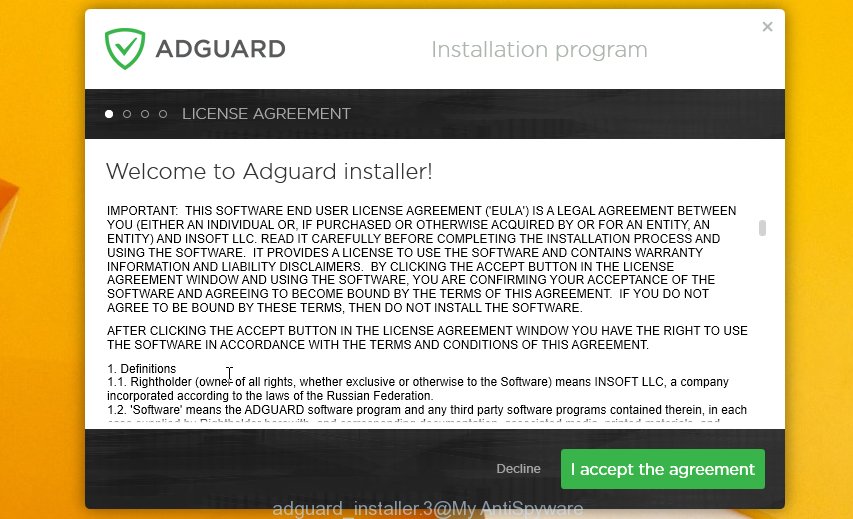
Follow the prompts. After the installation is finished, you will see a window as shown in the following example.

You can click “Skip” to close the setup program and use the default settings, or press “Get Started” button to see an quick tutorial which will assist you get to know AdGuard better.
In most cases, the default settings are enough and you don’t need to change anything. Each time, when you run your computer, AdGuard will launch automatically and stop popup ads, misleading web sites such Call Microsoft Technical Department, as well as other harmful or misleading pages. For an overview of all the features of the application, or to change its settings you can simply double-click on the AdGuard icon, which is located on your desktop.
To sum up
Now your PC system should be clean of the ‘ad supported’ software which shows misleading Call Microsoft Technical Department pop-up error on your system. Delete AdwCleaner. We suggest that you keep AdGuard (to help you block unwanted pop ups and undesired harmful web-sites) and Zemana Free (to periodically scan your computer for new malware, browser hijackers and ‘ad supported’ software). Make sure that you have all the Critical Updates recommended for Windows OS. Without regular updates you WILL NOT be protected when new ad-supported softwares, malicious applications and ‘ad supported’ software are released.
If you are still having problems while trying to get rid of Call Microsoft Technical Department popup scam from your browser, then ask for help in our Spyware/Malware removal forum.

